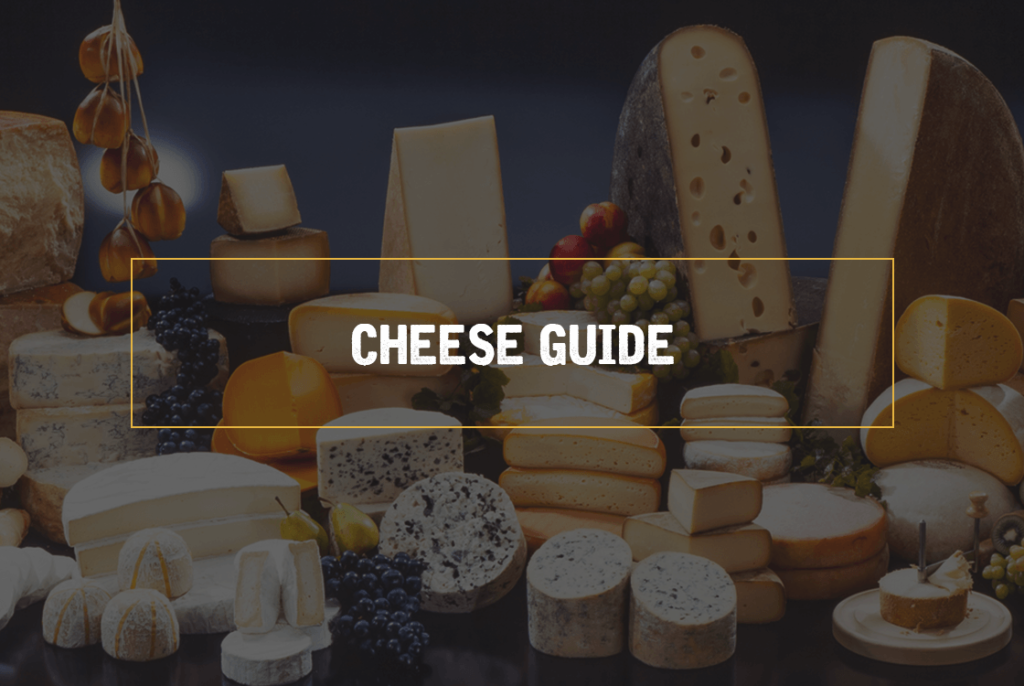
Cheese may be one of the world’s favorite foods — especially for Westerners. It’s no wonder, then, that artisans across cultures have developed innumerable types of cheeses in a wide variety of tastes and textures to please the palate. With so many cheese types, selecting cheeses to create a delectable cheese board or simply to top off your favorite dish can seem overwhelming.
We’ve created an explanation of many of the most beloved cheeses across the world. In our explanations, we’ve also included a wine and cheese matching guide so you can enjoy the very best combinations of flavors.
Fresh Cheese
Many of the cheeses we’ll look at are aged to achieve a certain flavor and texture. Fresh cheeses are not aged at all. They are soft and tend to have a simplistic, mild taste. Some are even a bit sweet. We’re going to cover several fresh cheeses that are staples in this category and can work beautifully in a variety of dishes or as eating cheeses on their own.
Fresh Mozzarella
Fresh Mozzarella is a curd cheese that was traditionally made from water buffalo in Italy. Today, most Mozzarella is made from cow’s milk. Fresh Mozzarella is made through a process called pasta filata. This involves incubating the milk with a whey starter, then adding rennet, which causes curds to form. These curds are placed in hot water or whey until they become stretchy. At this point, the cheesemaker kneads the cheese and creates small, round balls of Mozzarella.
Fresh Mozzarella is at its peak when it has just been made, but you can purchase it in brine or some other type of solution to keep it moist. Enjoy this soft, simple cheese on its own or as part of a salad, pizza or antipasto. If you’re looking for a wine to pair with fresh Mozzarella, try Pinot Grigio.
Feta
Feta Cheese is primarily made in Greece and has become a favorite in North America, as well. In the U.S., people often conflate Feta Cheese with goat’s cheese. There are some similarities between these cheeses, but there is a key difference. Whereas fresh goat cheese is made entirely from goat’s milk, Feta either contains no goat’s milk or a small amount. The primary ingredient in Feta is sheep’s milk.
Feta cheese is soft and crumbly and adds a touch of tanginess to any dish. Because of its origins, it is especially popular in Greek salads and other dishes. A variety of wines go well with Feta, including dry whites, such as Sauvignon Blanc, and bright reds, such as Beaujolais.
Mascarpone
Mascarpone is a type of cream cheese that hails from Italy. Acidic substances are added to the cow’s milk to make it curdle. The result is a cheese that is light, creamy and slightly sweet.
Marscapone is a traditional ingredient in Italian desserts like Tiramisu and cheesecake, but it can add a lovely creaminess to many dishes. It is also delicious with fresh berries. Since Marscapone is typically served as part of a sweet dish, try pairing it with your favorite dessert wine or coffee.
Queso Fresco
Queso Fresco comes from Mexico, where it is traditionally produced using raw cow’s milk, sometimes with goat’s milk mixed in. Most versions you’ll see in grocery stores in the U.S. are pasteurized. Unlike some other fresh cheeses, Queso Fresco is not buttery in flavor. Instead, it has a salty, tangy punch while still being quite subtle, overall.
Queso Fresco is a staple in Mexican cooking. It can help balance dishes with more intense flavors and can add a nice touch of flavor to milder dishes, such as salads. Try a sparkling Spanish Cava with your Queso Fresco dishes or a Mexican-style beer.
Ricotta
Ricotta is an Italian whey cheese. It can be made from the milk of sheep, cows, goats or Italian water buffalo. Most Ricotta you’ll find in the U.S. is made from cow’s milk. Ricotta is made similarly to other whey cheeses, but instead of pulling out the large curds and leaving the whey behind, Ricotta comes from the smaller curds left in the whey.
Ricotta cheese has a soft, subtle creaminess that makes it the perfect addition to all sorts of Italian dishes, from lasagna to cannoli. Riesling pairs well with Ricotta dishes.
Chevre
Chevre is the French term for all goats’ milk cheeses. There are many varieties of fresh Chevre, with each cheesemaker naming their own products, and all are identified by the lack of any rind. These cheeses are not ripened or aged in any fashion. Each will have a slight variation in flavor and texture based on the specific breed of goat that provides the milk as well as the grazing area.
The flavor of Chevre cheeses is very mild, and there is a slight tartness or lactic impression. Montrachet is a representative of this type. Fruity white wines like Sancerre are a good choice for pairing with Chevre.
Red Mold (Washed Rind) Cheese
The red mold cheeses are also referred to as washed-rind cheeses. They characteristically have an aroma that can be delicately woodsy to intensely pungent. Each of these cheeses has a red-orange rind that is a result of the cheese being washed, often daily, with a salt brine, wine, brandy or other liquid while being aged in a very humid environment.
If the cheese is made with a low profile of 2 inches or less, the mold will ripen the cheese and make it soft like Brie. If it is thicker, the mold imparts a flavor, but other enzymes in the cheese-making process give the intended consistency.
Reblochon
Reblochon is from the French Alps. It is a semi-soft, washed-rind cheese that ripens to a very smooth, supple texture surrounded by a yellow-orange rind with a slight dusting of white mold. The best Reblochon are made from raw milk, which allows the earthy, straw and slightly yeasty flavors to develop. The aroma tends to be fairly pungent.
Some of the full, rich flavor is the result of the milk coming from the second milking of very specific breeds of mountain cows — Abondance, Montbeliard and Tarine. Reblochon pairs well with white, fruity wines from the Savoie or young reds such as Fleurie or Saint-Amour.
Epoisses
Epoisses was first produced by the monks of the L’abbaye de Citeaux in the Burgundy region of France before the Napoleonic era. Epoisses is a soft-ripened, washed-rind cheese and has a very assertive pungency. The rind is washed with Marc de Bourgogne, which adds complexity to the overall taste.
The texture is smooth with a mouth-watering taste of sweet, salty and cream flavors. As it ripens, it becomes increasingly butterscotch in color and more assertive in aroma. Marc de Bourgogne pairs very nicely with Epoisses, and so do robust reds like Burgundy or Chambertin.
Taleggio
Taleggio is named after a town near Bergamo, Italy, located northeast of Milan near the Swiss border. It is a soft savory cheese made into 4.4-pound squares. Taleggio is a washed-rind, soft-ripened cheese that has a pink-gray rind. Its aroma is distinctively yeasty with impressions of freshly baked bread. The texture is smooth and supple but not as runny as Brie.
The flavor is tart, lactic and slightly salty when it is young. As it ripens, it becomes more complex and buttery. Some people describe it as beefy. Traditionally, it is served with fresh figs and is also excellent with grapes and apples. A crisp Pinot Grigio makes for a perfect pairing.
Pont l’Eveque
Pont l’Eveque (AOC) is a French classic from the Normandy area. AOC is the French notation for a “patented” recipe and name and is an abbreviation for Appellation d’Origine Controlee. Pont l’Eveque tends to have a drier rind than its cousins, and this rind is edible. Pont l’Eveque is made in either a 2.2-pound square or the more traditional 8-ounce wooden box. The small box variety can tend to dry out in shipment and, because of its smaller size, ripens more rapidly.
The flavor of Pont l’Eveque is akin to a lower fat Brie with more pungency. There are several great drink pairings to consider. The sparkle of Champagne cuts through beautifully, and crisp, aromatic whites, such as German or Austrian Riesling, are wonderful. Gewürztraminers originated in an area known for its red mold cheeses and pair well with all of the red cheeses. Also, consider Bourgogne Blanc or Cider Brut.
French Morbier
French Morbier is from the mountainous Franche Comte region that includes the Jura Mountains where it is made. The black line of ash that runs through its center easily identifies this cheese. This vegetable ash originally was dusted on top of the curds from the evening milk to protect the surface until the morning curds were added. The texture is smooth, somewhat like a Fontina Val d’Aosta, but the rind is washed, which encourages a red mold that can be quite aromatic.
Morbier is rather robust in its flavor and is best when made from unpasteurized, raw milk. Raw milk cheeses can be imported if they are aged in the country of origin for a minimum of 60 days. Generally, raw milk cheeses have a more complex flavor range than the identical pasteurized product. For drink pairings, try Arbois from the Jura region, Pouilly sur Loire or light, fruity reds like a Beaujolais.
White Mold Cheese
The best known of the white mold cheeses is Brie. This family of cheese is defined by the white penicillin mold that is rubbed or sprayed on its surface. The cheese is aged under very controlled conditions. The fleuri or white flower mold grows to become a white, fuzzy, downy mat which ripens the cheese from its starting firm texture to a silky smooth paste.
Brie
Brie, probably the best known of the French cheeses, comes from the Île-de-France area around Paris. This cheese is very hard and chalky at the beginning of its ripening process. The white penicillin mold, which is dusted on its surface, grows and slowly ripens the curd. Ripening takes about eight weeks. When fully ripened, the texture will be very smooth and can be runny. If it is less ripe, it will have a firm center.
As Brie ripens, its flavor becomes more intense. In the United States, consumers tend to prefer a buttery flavor, very little aroma and a perfectly white rind. The French prefer a more robust flavor with some straw-colored lines showing on the rind. At riper stages, the cheese will have a slight ammonia smell. Chateau Clarke or sparkling wines pair perfectly with Brie.
Fromage D’Affinois
Fromage D’Affinois is a French cheese and is a relative newcomer to the cheese world. It is a double cream Brie made using special filtration systems that allow the cheesemaker to culture a very soft curd. Instead of beginning with hard curd, as you would when making Brie, this cheese is very tender from the beginning.
The result of this process is a cheese that is much more palatable in a very young state. Its flavor is much like very fresh cream with nice spring air overtones. Beaujolais makes for a beautiful pairing with Fromage D’Affinois.
French Normandy Camembert
French Normandy Camembert is a more robustly flavored cousin of Brie. It’s made in small rounds with whole milk. No cream is added, and the resulting cheese is lower in fat than most Brie-type cheeses.
Rather than the buttery flavor of Brie, a Camembert will have a pronounced herbal, salty flavor with a hint of fruit. Its aroma will give the impression of mushrooms and hay. At room temperature, Camembert will have a smooth texture with a slight firmness in its center. It pairs well with a variety of beverages, including Bordeaux St Emilion, Cider Brut, Gamay, Pinot Noir and White Burgundy or Vougeot.
French St. Andre
French St Andre is a soft-ripened triple-cream cheese. The triple-cream cheeses originated in the Champagne region of France and are unique in that they are made with more butterfat. As a soft-ripened cheese, it has a white surface mold rind that, over time, changes the firm, chalky curd into a very smooth paste. Because the form size is about 3 inches high, the cheese is usually sold with a firm center surrounded by a very smooth halo of softness.
If the cheese is allowed to ripen fully, the rind will become quite strong. St. Andre is best served with a crusty bread and fruit along with Champagne, sparkling wines or White Burgundy wines.
Roscchetta
Roscchetta is a unique almost-fresh cheese produced in the Langa area of the Italian Piedmont. The surface mold is a result of short aging but is not intended to change the texture of the cheese. This cheese is made with a mixture of cow, sheep and goat’s milk.
It is very soft and delicate in flavor with a slight white and amber mold on the surface. Roscchetta gives the impression of springtime and is highlighted perfectly when paired with a glass of Prosecco.
Le Chevrot
Le Chevrot is a goat’s milk cheese that has been ripened. The French would refer to it as Chevre affiné. It is much firmer in texture than a fresh Chevre and has a more developed flavor with a pleasing nutty impression. The rind is edible. This cheese can be ripened additionally at home in a cool area, optimally 55 to 60 degrees, under a dome for two to five days, depending on your preference.
With additional ripening, the flavor will intensify and the gaminess of the goat may become more pronounced. Although this is a great eating cheese, it can also be shredded over a salad or pasta. Try enjoying Le Chevrot with Sancerre or Pouilly Fumé.
French Bucheron
French Bucheron is a very traditional style of Chevre affiné. This particular variety is made in a 4-pound log, which allows it to ripen slowly. The texture is rather firm and crumbly with a soft, creamy halo around the edge. The wider the halo, the sharper the cheese will be. In its young state, the cheese is somewhat tart and crumbly.
As it ripens, it becomes smoother and develops a flavor that resembles a blue cheese, although there is no blue mold present. French Bucheron is excellent served with Belgian endive and roasted walnuts. For wine pairings, try Pouilly Fume, Sancerre, Semillon Blanc or Vouvray-dry from the Loire Valley.
St. Marcellin
St. Marcellin is a soft cow’s milk cheese from the town of the same name in the southeast of France. St. Marcellin is disk-shaped and ripened in a ceramic cup. It typically has a beige crust with some blue mold and a soft beige creamy interior.
The texture will range from rather firm, with lactic and yeast flavors, to extremely runny. When runny, it is intensely rustic, nutty and yeasty. Chateauneuf-du-Pape and other reds from the Rhone Valley pair well with St. Marcellin.
Blue Cheese
The blue in blue cheese is Penicillium roqueforti. Its color can range from blue to blue-green depending on the curing conditions. Generally, blue cheeses are sharper than other cheeses, but there are examples of mild varieties. To make the characteristic filaments of blue or green in these cheeses, blue cheese mold is allowed or encouraged to spread through the cheese as it ages by punching air tunnels into the wheels of curd.
Blues become creamy and soft, although their structure often seems crumbly even while the texture remains creamy. The strong flavor of the mold dominates the cheese more than the type of milk used. Many people find that the moldy flavors of these cheeses fight with dry wines. Their creaminess is especially tough on reds. Sweet wines make for some of the greatest wine-and-cheese matches, including Sauternes with Roquefort and Port with Stilton. The nutty taste of oak found in these sweet wines pairs especially well with blue cheeses.
French Roquefort
If you know just one blue cheese name, it’s likely French Roquefort — the standard-bearer of this family of cheese. It is produced entirely from the milk of the ewes that feed on the vast plateaus found in the Aveyron region of France. The cheese is ripened in caves located beneath the Roquefort-sur-Soulzon villages. The quality of the milk, the processing of the curd, the adding of Penicillium roqueforti and, finally, the ripening in natural caves makes this cheese unique. The exterior of Roquefort should be white and faintly shiny. The texture should be cohesive yet slightly crumbly.
The smell has a subtle reminiscence of the caves. The taste is complex – soft, creamy, flinty and slightly salty. Good Roquefort should be sharp but never aggressive. Roquefort goes well with nuts and figs, as well as several wine selections. Sauternes and Porto are fortified, well-aged wines that cut right through the butterfat. Bordeaux, Cabernet and Meritage are well structured, complex red wines with oak qualities that show well with the cave flavors and the limestone flintiness of the cheese.
French Saint Agur
French Saint Agur is a double cream, blue-veined cheese made from cow’s milk. This cheese is relatively new to the marketplace and is produced in the Auvergne region of France. This area also produces Bleu de Auvergne, Roquefort, Fourme de Ambert and many other excellent blue cheeses. Because this is a double cream cheese, the texture is very smooth.
Its flavor has some of the fullness and flinty impression that comes with a good Roquefort, though it is considerably more subtle and sweeter than most of the other blues from the region. Uncharacteristic for a cheese with creamy texture, it has a full blue flavor. Pair Saint Agur with your favorite Cabernet Sauvignon.
English Blue Stilton
English Blue Stilton is often referred to as the King of Cheeses. This cheese is made with non-animal rennet. It is a rather firm but crumbly blue cheese that tastes somewhere between a cheddar and a blue. The intensity of flavor will vary with age, as with all cheeses. Generally, the cheese is best when there is a nice distribution of blue and the cheese color is medium amber. If the cheese is too white, it will be chalky, and if too old, it will have a dark halo along the rind.
When there is a halo present, you can expect the center portion to taste excellent, but you may have to trim more rind than usual. Stilton is best served with apple or pear. Traditionally, Port or a sweet dessert wine accompanies Stilton. The caramel and raisin flavors of the Port complement the savory, milky rich and floral flavors in the cheese. Semillon wine offers crispness and notes of honey that can help balance the creamy, slightly salty and piquant tones in the cheese.
Creamy Gorgonzola
Creamy Gorgonzola, also called Gorgonzola Dolce, is supple and luxurious with an unmistakable tangy creaminess. Dolce means sweet and refers to the creamy variety of Gorgonzola. Its pale white interior is laced with streaks of blue-green mold, which gives this cheese a striking appearance to match its spicy, earthy flavor.
Enjoy Creamy Gorgonzola as a table cheese, spread thickly on a piece of crusty baguette or as an ingredient in a cream sauce. It is excellent spread on prosciutto, rolled and served with other antipasto. Pair with big red wines or sweet wines such as Marsala, Picolit or Moscato d’Asti.
Mountain Gorgonzola
Mountain Gorgonzola is called Piccante, meaning spicy or sharp, Gorgonzola in Italy. Because it is lower in moisture than Dolce Gorgonzola, it will be sharper with a more intense blue flavor than the Dolce. Its texture is firm with a very smooth paste. It will not become soft enough to spread, nor will it crumble like Stilton.
This cheese is well suited to cubing on a salad. Mountain Gorgonzola is an excellent match with pears and fresh figs. Prosecco from the Veneto region provides the perfect sparkle on the tongue with the cream, salt and blue of the cheese. A young Bordeaux or Carmenere is also an excellent choice since the oaky, dark fruit components make for a great pairing with the explosive flavors of the cheese.
Spanish Cabrales
Spanish Cabrales — closely related to Valdeon or Pico de Azur, Picos de Europa or Picon — is made in the north-central mountains of Spain, a region called the Asturias. This is a blue cheese that can be made from a blend of milk, although in the U.S., it is 100% cow’s milk. There are slight differences between the varieties with alternative names.
Real Cabrales is usually aged to be rather firm to hard and does not have leaves on its exterior. The other types are typically covered in sycamore leaves and, although they have a very intense blue flavor, are softer in texture. These are very complex, beefy blues with impressions of blackberries and bittersweet chocolate that mingle with very earthy hay overtones. Big reds like Rioja or Bierzo and Sherry, either dry or sweet, pair well with Cabrales.
Bleu d’Auvergne
Bleu d’Auvergne (AOC) is a cow’s milk blue cheese that is lesser known than its famous cousin, Roquefort. Roquefort, which was the first cheese to be granted AOC status, is always made from 100% sheep’s milk and aged in the natural caves of Mont Combalou, Roquefort, France. Bleu d’Auvergne was first made in the 1850s, and though it is more obscure than Roquefort, is a delicious bleu cheese to try.
Bleu d’Auvergne has a natural rind, with a smooth texture, accompanied by a unique sharpness. This cheese is extremely versatile. It goes excellently with crisp pears, crumbled on a salad of greens and toasted walnuts or melted in a cream sauce for pasta or vegetables. A dry Jurançon, big reds from the Rhone Valley and Sauterne all pair well with Bleu d’Auvergne.
Semi-Hard and Semi-Soft Cheeses
Semi-hard and semi-soft cheeses have textures that fall between soft and hard cheeses. The main difference between a semi-hard and a semi-soft cheese is the level of moisture it contains. Semi-soft and semi-hard cheeses are both broad categories, so we’re just focusing on a few of the most popular types.
Swiss Cheese
Swiss Cheese is known for its distinctive holes and its buttery, creamy flavor. Swiss cheese is extremely popular in North America, but the domestic version most of us are familiar with, while delicious, is quite different from the Swiss cheese it is based on, known as Emmenthal. Emmenthal is the oldest and most famous cheese that hails from Switzerland. Other well-known types of Swiss cheese include Lacy Lite and Jarlsberg.
Swiss cheese is versatile. It can be enjoyed in fondue, on sandwiches and as an eating cheese. For a perfect wine pairing, opt for a lighter red, such as Pinot Noir or Merlot.
Swiss Gruyere
Swiss Gruyere is a raw milk cheese made in the region of the same name in the French-speaking part of Switzerland. The cheese is made in large wheels that weigh up to 75 pounds and are usually matured from four to 12 months. One of the best cooking cheeses in the world, it is denser than Emmenthal with smaller holes and a nutty, fruity, savory taste. During the maturing period, the cheeses are brine-washed regularly to give them their dry sharpness.
If any cheese is essential to a Swiss Fondue, it is Gruyere. Because Gruyere is used so extensively in cooking, it is often overlooked as an eating cheese. It has a very smooth texture, sometimes with a bit of granular protein crystals from the aging process. The flavor is distinctly nutty and sharp, especially at a 10- to 12-month age. White or red wines from the Alsace, Bandol and reds from the Rhone Valley all pair nicely with Swiss Gruyere.
Petit Basque
Petit Basque is a semi-soft, sheep’s milk cheese that is made on the French side of the Pyrenees Mountain range that divides France and Spain. This region is well-suited to raising sheep, and the sheep’s milk produces a beautifully smooth cheese with a nutty flavor. It is relatively mild with an interesting bite. The individual wheels are small, weighing about 1.4 pounds.
Piedirosso wine has cherry tones with a hint of sweetness that goes so well the herbal tones of the cheese. Cabernet wines have ripe tones that make the perfect counterpart to the mountain flora, mild flint, and straw and hay flavors that make up this cheese.
Super Sharp Canadian Cheddar
Cheddar is one of the most popular cheeses in the United States. S. Clyde Weaver Co. ages its Super Sharp Canadian Cheddar in Lancaster County to a minimum of three years. This cheddar is lower in moisture than most American-made products. It is made with heat-treated milk. In the 1960s, most U.S. cheddar was heat-treated but with the demand for aseptic packaging and less than 60 days age, the U.S. market has moved to fully pasteurized, high moisture cheddar that has very little traditional cheddar curd crumble.
Super Sharp Canadian Cheddar stays true to traditional cheddar and has good acidity with a slight bit of caramel or sweetness in the background. This cheddar is perfect with warm apple pie or a Belgian Beer.
Spanish Manchego
Spanish Manchego is produced in the central plateau around Madrid and is made from the milk of the La Mancha sheep. Manchego has a brown colored rind with a crosshatch pattern. The interior of the cheese has a light amber color indicative of its six- to eight-month age. Younger cheeses tend to be whiter.
Manchego has an even distribution of holes and a medium-sharp, slightly briny, nutty flavor. The tapas bars of Madrid typically serve this cheese as thin wedges arranged in a sunburst on a plate. It is often accompanied by fig cake or membrillo. Enjoy Spanish Manchego with a dry Jurançon or fruity red wine.
Hard Cheeses
Hard cheeses are excellent for enjoying in small amounts since they tend to have a strong flavor. For example, you may grate a hard cheese on a salad or a pasta dish. The sharp flavor hard cheeses are known for comes from long periods of aging. We’re going to look at a few of the most popular hard cheeses around the world.
Extra Aged Gouda
Most of us know Gouda or its cousin, Edam, as a mild, smooth-textured breakfast cheese wrapped in red wax. Extra Aged Gouda is completely different and falls within the hard cheese category. It is aged 18 to 24 months and develops a firm, Parmesan-like texture. Sometimes Extra Aged Gouda will have little granules of crystallized protein. It will always have a clear caramel sweetness.
This hard cheese is great at the end of a meal with a sweeter wine, Belgian beer or a cup of coffee. The Dutch will often serve it with fresh ginger root. Grated over a very simple pasta, Extra Aged Gouda adds an aroma and delicate flavor that is very unique.
Italian Piave
Italian Piave is a traditional cheese from the mountains of northern Italy. It is named after the river of the same name in the northernmost part of the province of Belluno, Italy. All of the cows’ milk for Piave cheese comes from this valley. Piave has a straw color with a firm, almost meaty texture. The cheese is aged a minimum of five months and resembles a young piece of Parmigiano-Reggiano.
Italian Piave is an excellent eating cheese and is also good for grating. The cheese has an intense, full-bodied flavor that increases with age. Some describe the flavor as nutty and spicy. It pairs especially well with a fruity Merlot.
Asiago
Asiago originally came from the Asiago plateau in the foothills of the Italian Dolomites. Asiago stands out from other hard aged Italian cheeses in that it is milder and less acidic. The cheese is typically surrounded by wax. The color of the wax indicates how long the cheese has been aged. White wax indicates a young cheese while black wax indicates more aging.
Longer aged Asiago has a stronger, fuller flavor than young varieties. Asiago is a versatile hard cheese you can enjoy in a variety of ways. Pair it with robust reds like Barbera, Barolo or Chianti.
Parmigiano-Reggiano
Parmigiano-Reggiano is authentic Italian Parmesan cheese made in northern Italy. Reggiano is aged to a subtle, nutty aroma and flavor that has made it such a well-loved cheese the world over.
Parmigiano-Reggiano is best eaten in chunks as-is or grated on white-sauce pasta dishes. Although many recipes for tomato-based pasta dishes call for Parmesan, the authentic Reggiano tends to be lost with the intensity of the tomato sauce. Romano or a lesser grade Parmesan is better suited, and less expensive, in these recipes. This cheese is excellent served as a dessert course with your favorite red wine.
Tuscan Table Cheese
Tuscan Table Cheese, also called Pecorino Stagionato, is a cave-aged Pecorino or sheep’s milk cheese. Its flavor shows a slight flinty saltiness, which is a result of being made from sheep’s milk. Even though this cheese is hard-aged, its flavor profile is very subtle. It does not have the sharp cutting acidity of a Romano.
However you use Tuscan Table Cheese, whether by itself or grated on a savory dish, it is critical that this cheese is served at room temperature. Enjoy it with Chianti, Brunello or Lungarotti.
Gourmet Cheeses From S. Clyde Weaver
When you want to enjoy cheese that is a cut above your typical grocery store selections, try gourmet cheese from S. Clyde Weaver. We have specialty cheeses of many kinds, both in blocks and spreads, so you and your guests at your next gathering can enjoy amazing cheese selections that remind you of why cheese is such a popular food across the world. Our cheeses are made right here in the heart of Lancaster County, Pennsylvania. Shop online today.
Page Updated 01/07/2020
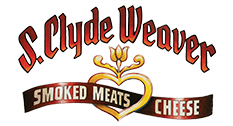
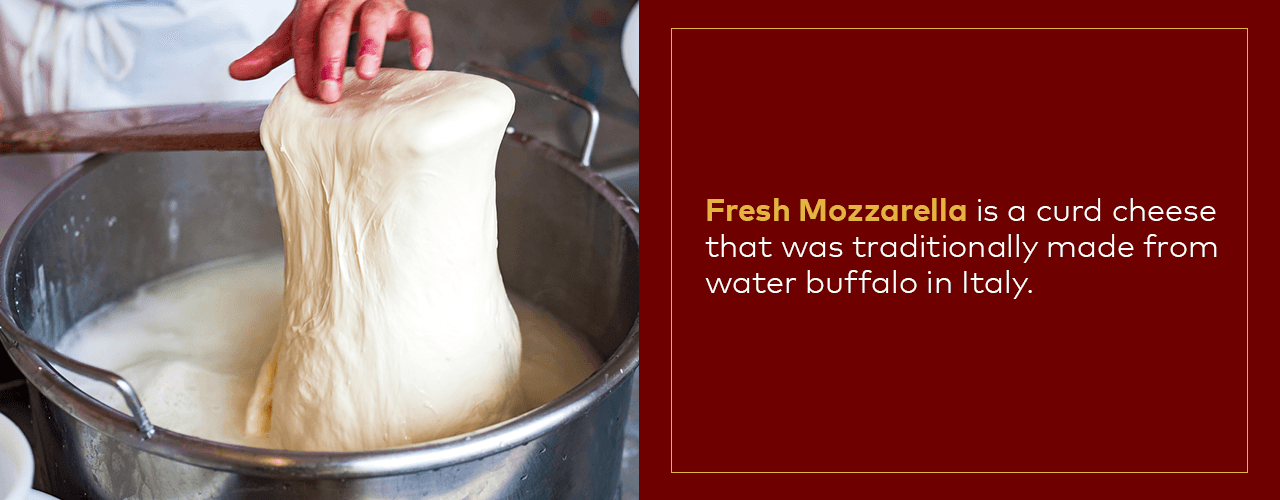
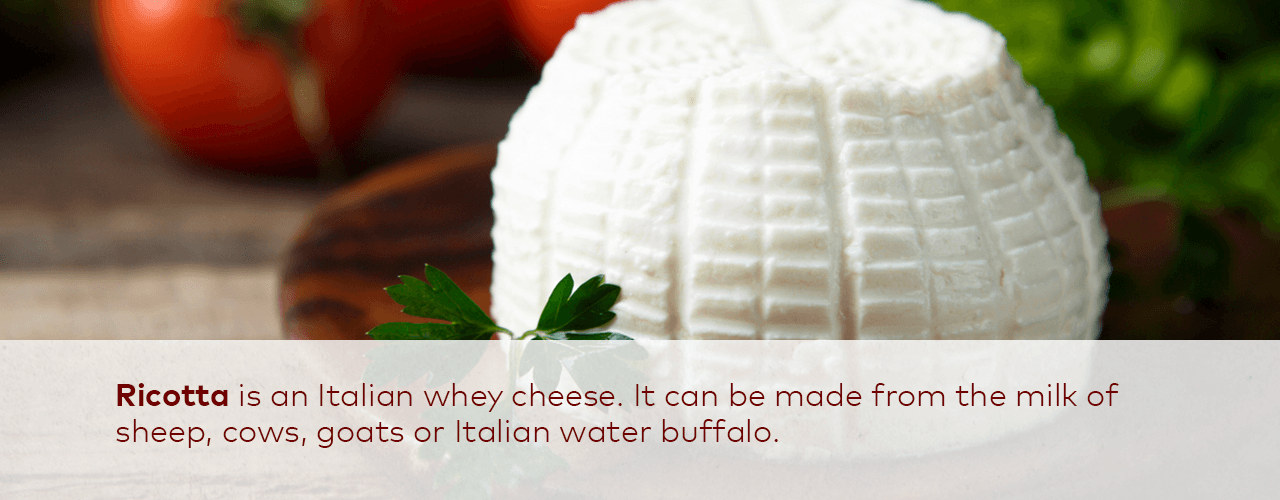
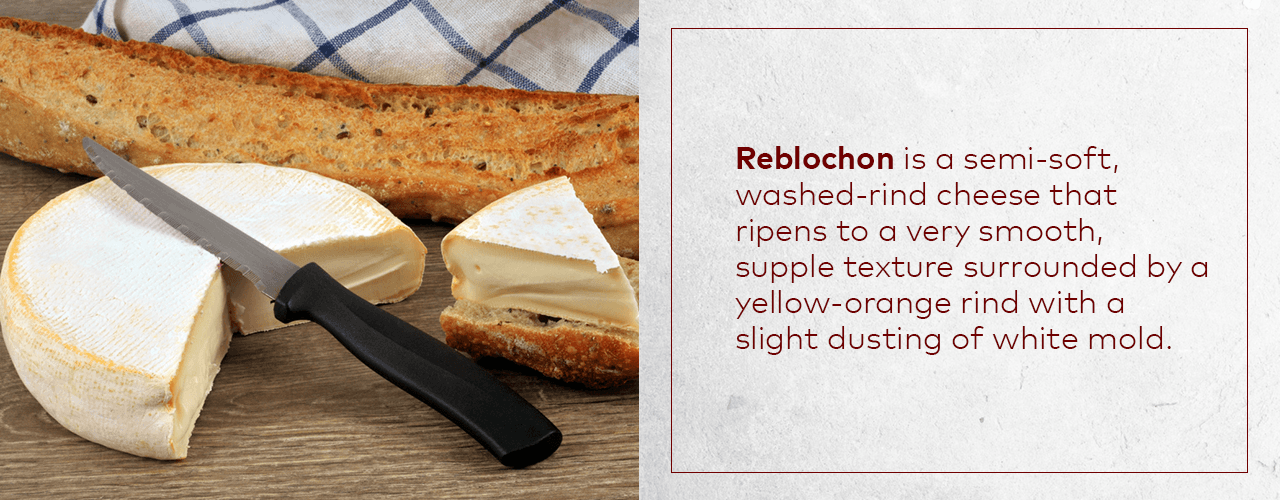
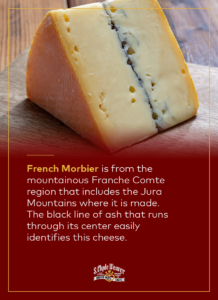
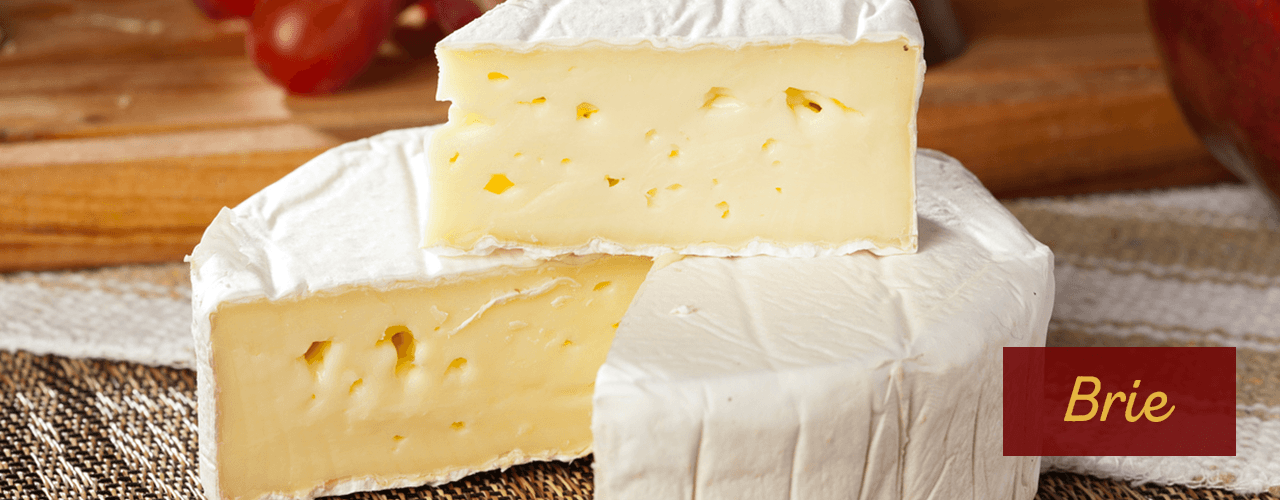
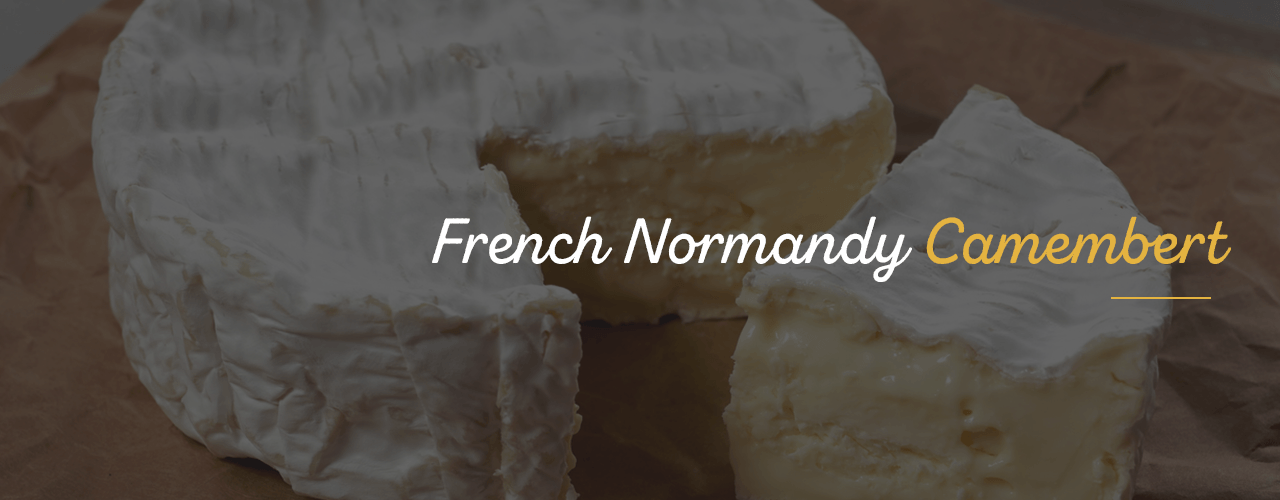
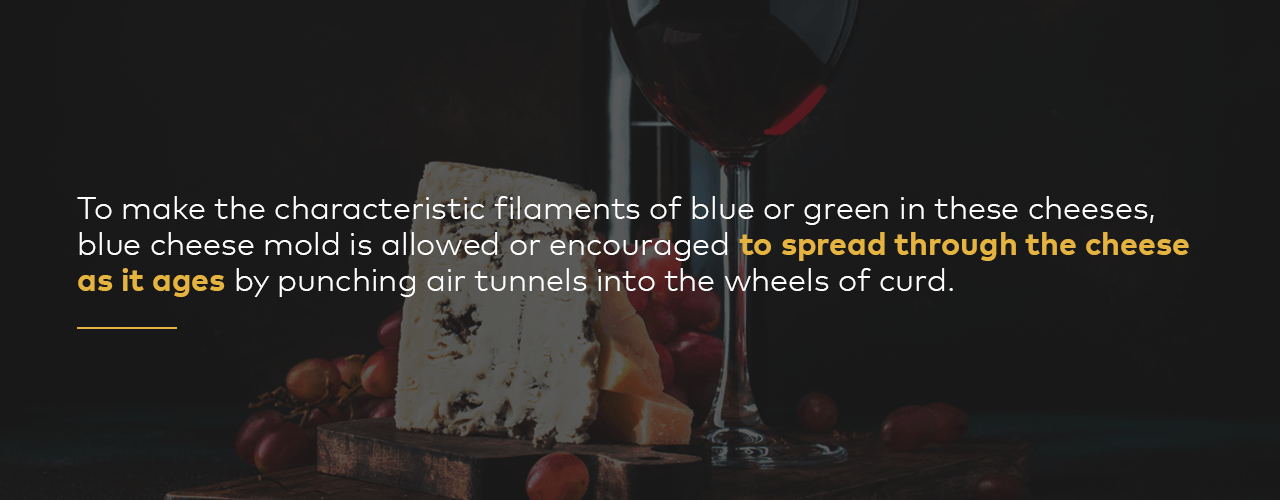
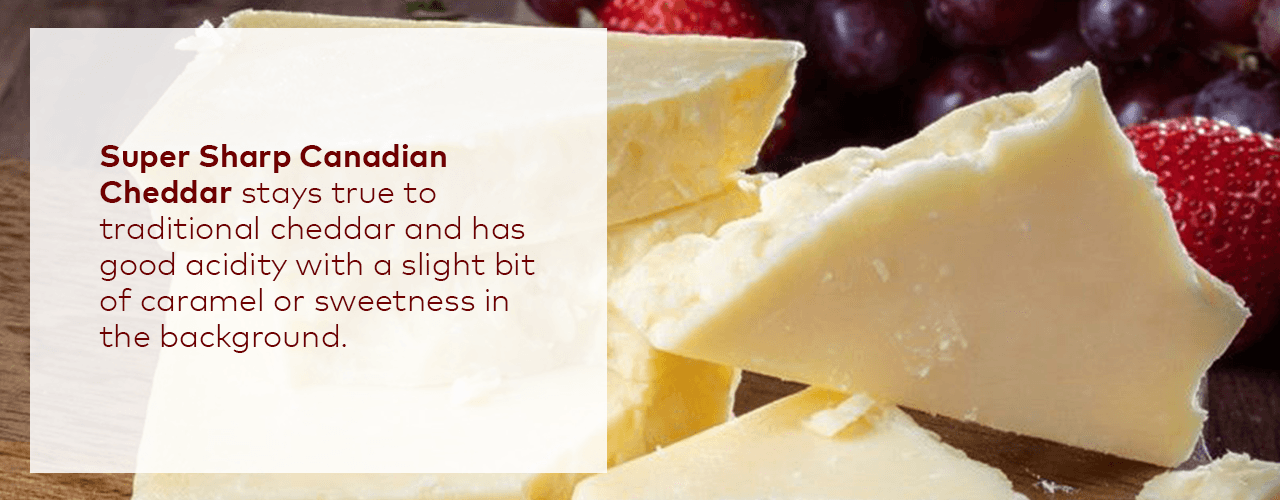
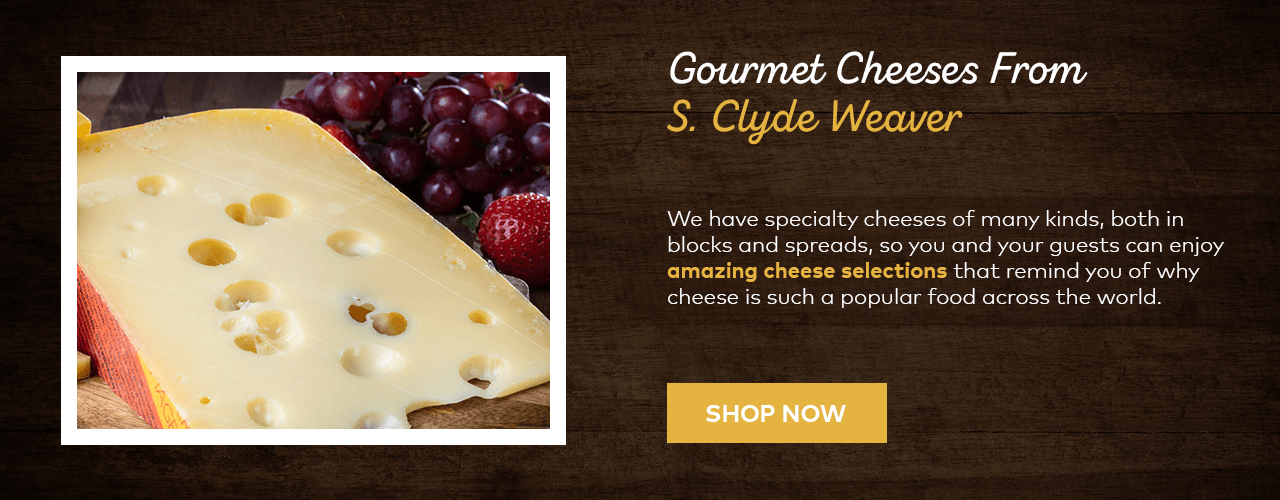
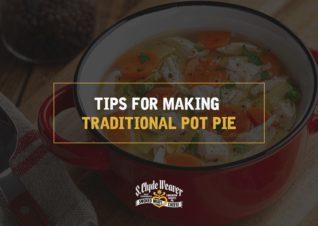

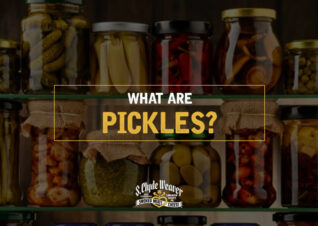







I didn’t see anything about Comte! Do you have anything on this?
Do you sell cup cheese?